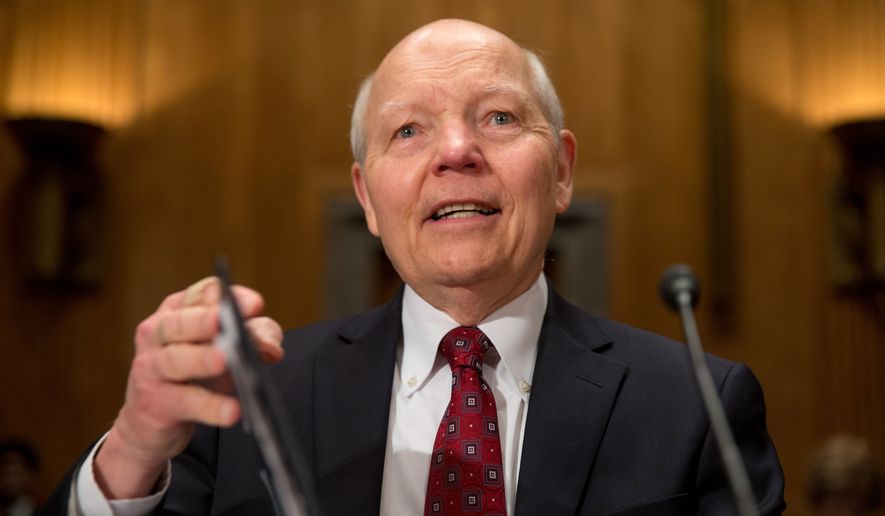The IRS cannot be sure that Americans who lacked health insurance last year have complied with Obamacare’s “individual mandate” penalty this tax season, according to an inspector general report Friday that pointed to a decision to delay proof-of-coverage forms from insurers and employers until 2016.
Agency managers told the Treasury’s Inspector General for Tax Administration that a “business decision was made to not develop processes and procedures” to ensure compliance after it decided in 2013 to delay the pair of forms. The documents are sent to both filers and the IRS, allowing the federal government to cross-check what filers say on their returns.
“The transition relief was intended to give the insurer time to adapt its health coverage and reporting systems to comply with the [Affordable Care Act],” the IG report said. The same was true for employers.
Obamacare’s health exchanges did report 2014 insurance details for its customers on a form known as the 1095-A, although more than 800,000 customers on the federal HealthCare.gov portal received ones with errors.
For non-exchange customers, the 1095-B form from insurers and 1095-C form from employers were delayed for a year.
IRS officials have stated that filers should be truthful on their returns and that misrepresentations will be punished, much as the IRS goes after filers for other shady maneuvers.
However, the agency is unable to use enforcement tools such as liens to collect the mandate penalty.
“Our income tax system is built on voluntary compliance,” the IRS said Friday in a statement on the IG report. “The vast majority of taxpayers comply with their tax responsibilities. As [the IG] noted, the IRS is using the normal post-filing compliance processes this year to verify claims of health care coverage and health care exemptions.”
The tax season that officially closed April 15 marked the first time filers had to address their health-coverage status on returns.
While many just had to check a box, some had to reconcile tax credits they received to purchase health plans on state-based insurance exchanges, or pay the penalty for lacking adequate insurance.
Some people qualified for statutory carve-out — for instance, people who are incarcerated or cannot afford insurance, even with government subsidies — or so-called hardship exemptions from the mandate, such as remaining ineligible for Medicaid because a state did not expand its program.
As of Jan. 2, the federal exchange had exempted 351,971 people, the IG report said.
The federal exchange and Connecticut, which is the only state that processes its own exemptions, must report exemption data monthly, while filers report an exemption code on their returns.
The IRS told the IG it will examine the data to see if there is wide variance between exchange data and what filers say.
Non-exempt filers who lacked insurance in 2014 had to pay $95 or 1 percent of household income above the filing threshold.
The penalty this year rises to $325 or 2 percent of income, and $695 or 2.5 percent in 2016.
Treasury’s IG found the IRS’ tool for calculating what a filer owes is quite accurate, but said it would have been nice if the agency provided such a tool to everyday Americans.
IRS officials said they did not provide one because four out of five people file online, and the IRS had worked with tax software companies to make sure they accurately compute the individual-mandate tax.
“While we understand the IRS’s decision to partner with the tax return software provider community, we also believe the IRS has an obligation to provide the same level of assistance to all taxpayers, including those who file paper tax returns,” the IG said.
The IRS said it will reconsider its position and study whether it can provide a calculation tool on its website.
• Tom Howell Jr. can be reached at thowell@washingtontimes.com.




Please read our comment policy before commenting.